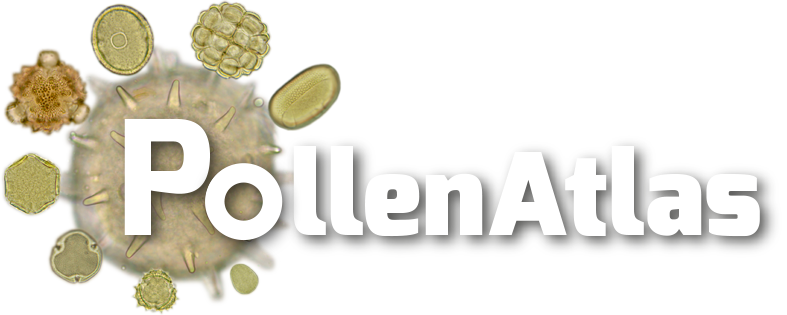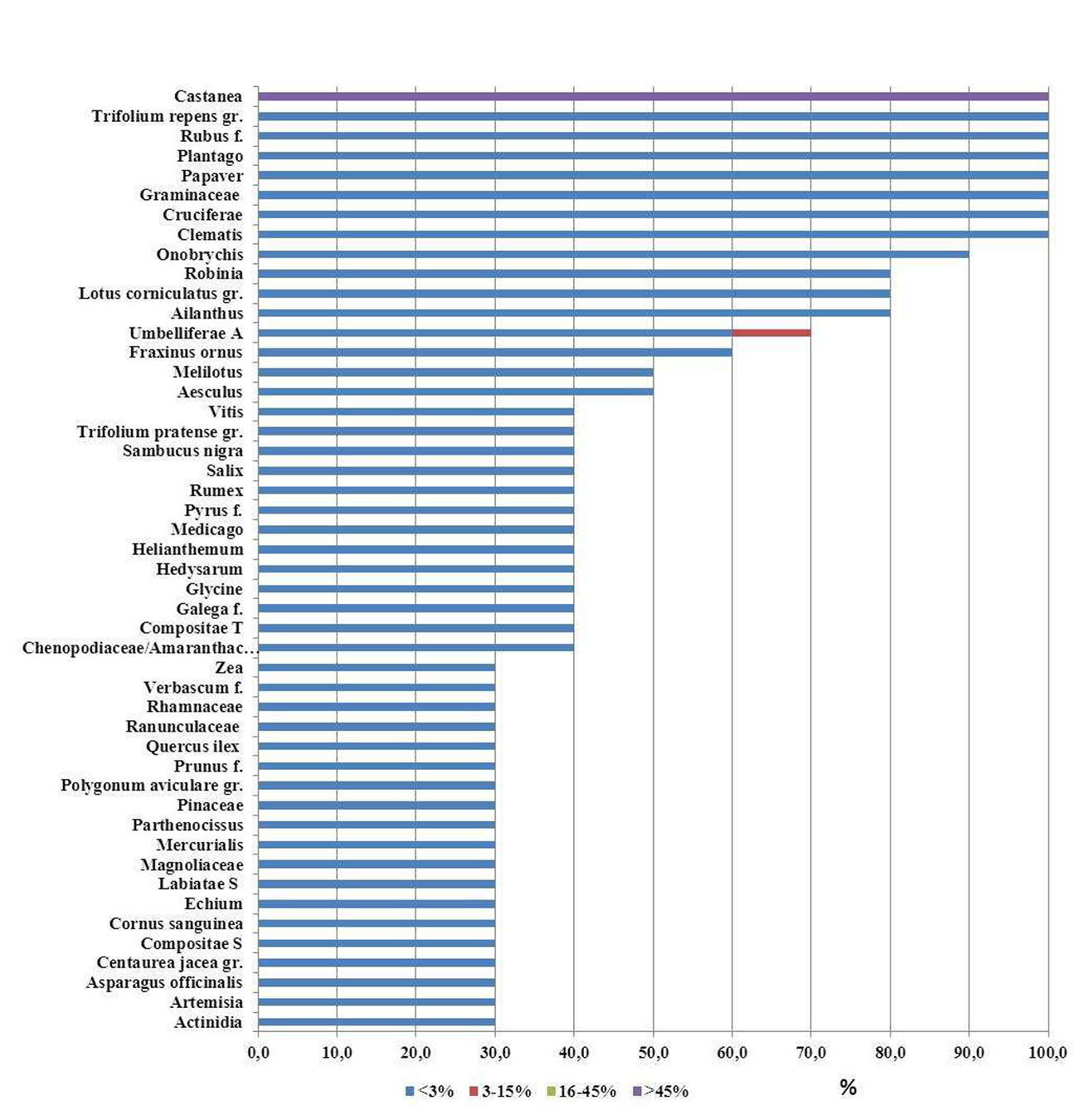The chestnut honey samples produced in the region come mainly from the hilly belt and, to a lesser extent, from the mountain zone. These honeys, by melissopalynological point of view, are characterized by a high absolute content of pollen grains, generally between 100,000 and 500,000 and by a Castanea pollen percentage always very high. Consequently, the base pollen spectrum is masked. Distinctive features of the spectrum, in addition to the high Castanea percentage, are the elements proper to the region (Graminaceae, Rubus f., Cruciferae, Papaver, Trifolium repens gr., Robinia), those peculiar of the mountain zone, Onobrychis, and typical forms of anthropic environments, Ailanthus, Clematis, Plantago, Lotus corniculatus gr. and Umbelliferae A.
The main differences with the chestnut honeys produced in other areas of Italy are a lack of proper mountain indicators of alpine honeys (mainly Ericaceae and Tilia) but also both Mediterranean indicators of the Tuscan honey (Erica arborea and Hedysarum) and those of the southern regions like Campania, Calabria and Sicily (Hedysarum once again, Olea, Citrus, Eucalyptus).





